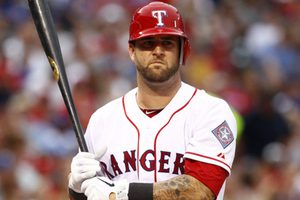
The 2012 Boston Red Sox season was an unmitigated disaster.
The Red Sox opened the season with a bloated $173 million payroll, third-highest in the major leagues behind the New York Yankees and Philadelphia Phillies. Boston ended the season with 93 losses and the third-worst record in the American League.
They bottomed out. As an encore to their historic September 2011 flop, the Red Sox finished last in the division and endured their worst season since the 1965 edition lost 100 games. From August 1 until the end of the regular season, Boston went 16-42 — the worst record in baseball.
But what went wrong? How did a squad that won 90 games in 2011 tank so badly?
The lack of camaraderie that emerged during their catastrophic collapse carried over into 2012. This team had zero chemistry — a far cry from the brotherhood displayed by the 2004 World Series winners. When Buster Olney reported that Boston’s dysfunctional clubhouse had become toxic in the middle of June, he merely confirmed the obvious.
Instead of bringing his fractured team together, manager Bobby Valentine drove them apart. The fiery skipper was at odds with his players and coaches from the start. He said all the wrong things and became a lightning rod for controversy. “Fire Bobby V” became the rallying cry of Red Sox Nation. The front office mercifully cut ties with Valentine as soon as the season ended.
Valentine made a bad situation worse, but he wasn’t at fault for how Boston’s season turned out. Injuries devastated the roster, and the players who stayed healthy underperformed. The outfield was so decimated that the front office resorted to bringing in the likes of Marlon Byrd and Scott Podsednik to plug the leaks. The Red Sox were never at full strength.
As the team faded out of the playoff picture in August, it became evident that some sort of drastic, sweeping change was necessary to revitalize the sagging franchise. So, general manager Ben Cherington pulled the trigger on the biggest move of his young career. With one blockbuster trade, he managed to reshape the roster and shed more than $260 million in future salary commitments. The Red Sox said goodbye and good riddance to Adrian Gonzalez, Josh Beckett, Carl Crawford and Nick Punto.
At the time, Cherington defended the trade by stressing the need for a more disciplined approach. This strategy has prevented Boston from entering the Josh Hamilton sweepstakes. So far, Cherington has kept his word. He’s refrained from throwing money at expensive free agents. Instead, he’s taken care of some team housekeeping by replacing Valentine with John Farrell, re-signing David Ortiz and filling out the coaching staff. Nothing splashy, but important moves nevertheless.
There is still plenty of work to be done, however, and Cherington has a busy winter ahead of him. Gonzalez left a gaping hole at first base that was filled this morning when the team agreed to a three-year $39 million deal with free agent Mike Napoli. Napoli is a great fit because he’s a right-handed slugger who can take advantage of Fenway Park’s Green Monster. Cherington also has to decide who will play alongside Jacoby Ellsbury in the outfield next year. Ellsbury is fast, but he can’t cover the entire outfield by himself.
Starting pitching should be a top priority given how poorly the rotation performed last year; its 5.19 ERA was the worst in team history. It’s no secret the Red Sox need more frontline starters to bolster their thin rotation. The pitching staff lacks a true number-one starter, and elite starting pitchers don’t grow on trees. The only bona fide ace on the market is former Cy Young winner Zack Greinke, but he figures to command something close to the seven-year, $161 million contract CC Sabathia inked with the Yankees in 2008. Beyond Greinke, there’s a bevy of solid veteran starters with proven track records such as Anibal Sanchez, Edwin Jackson, Dan Haren, Kyle Lohse, and Ryan Dempster. Sanchez is too pricey, but the others should be more affordable.
Regardless of how the Red Sox fill out their roster, they will be hard-pressed to contend next year. The AL East is shaping up to be the most competitive division in baseball. The Yankees, Tampa Bay Rays and Baltimore Orioles all won at least 90 games last season, plus the Toronto Blue Jays just raided the Miami Marlins for a trio of All-Stars. It’s going to be a crowded field next year.
Though the competition looks formidable, the Red Sox still have enough talent to contend. Their core of Ellsbury, Ortiz, Dustin Pedroia, Will Middlebrooks, Jarrod Saltalamacchia, Jon Lester, Clay Buchholz, and Daniel Bard remains intact (for now). With a restocked farm system and the right moves to complement this nucleus, Boston could be a dangerous team in 2013.
It’s still too early to tell. Championships aren’t won on paper in December. They’re won on the ballfield in October.
But for now, Red Sox fans can take solace in the fact that their team has nowhere to go but up.
